13+ SAMPLE Annual Leave Plan
-
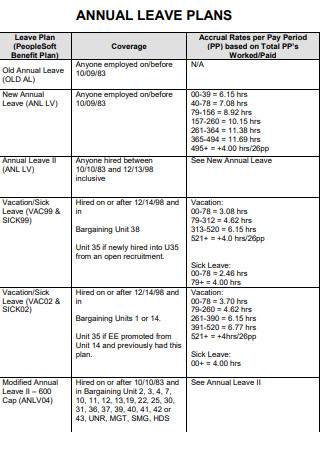
Annual Leave Plan
download now -
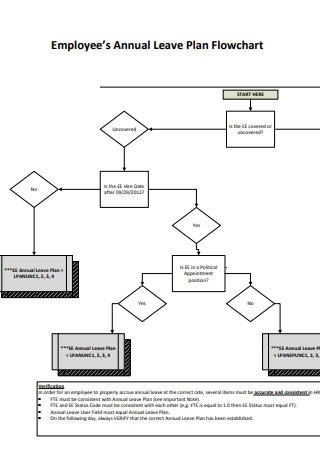
Employees Annual Leave Plan Flowchart
download now -
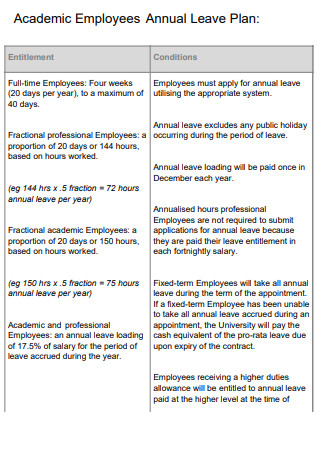
Academic Employee Annual Leave Plan
download now -

Basic Annual Leave Plan
download now -
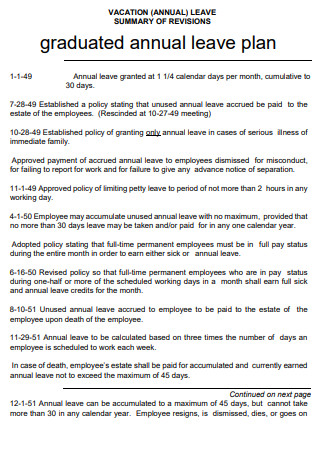
Vacation Annual Leave Plan
download now -
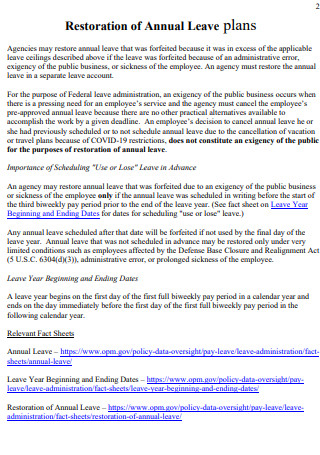
Restoration of Annual Leave Plan
download now -
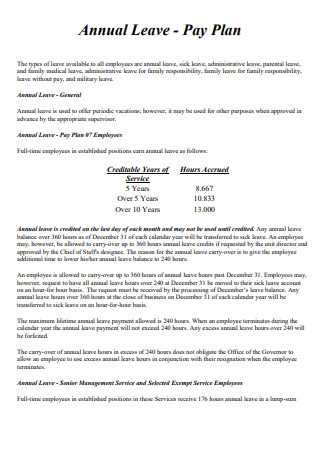
Annual Leave Pay Plan
download now -
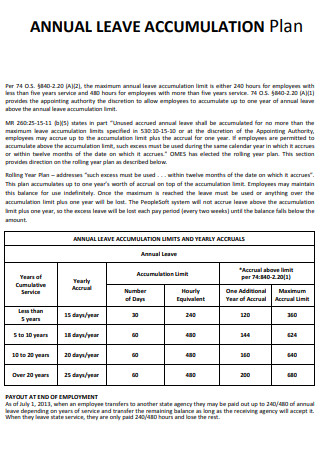
Annual Leave Accumulation Plan
download now -
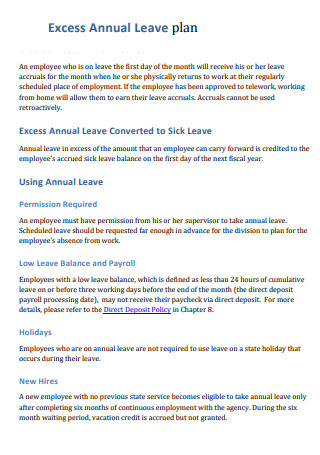
Excess Annual Leave Plan
download now -

Unused Annual Leave Plan
download now -
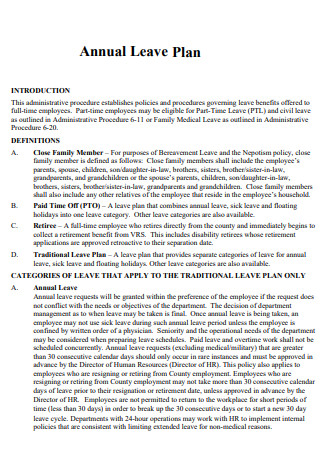
Sample Annual Leave Plan
download now -
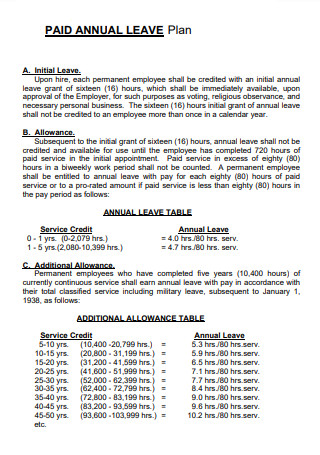
Paid Annual Leave Plan
download now -

Professional Annual Leave Plan
download now -
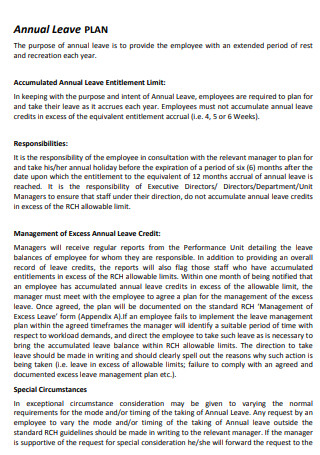
Standard Annual Leave Plan
download now
What Is an Annual Leave Plan?
An annual leave plan is a comprehensive document that details and monitors the annual leave credits of an organization’s employees. It is a yearly plan or planner that is typically used by Human Resource professionals for timekeeping and payroll purposes.
According to an online article by CNBC, statistics showed that 76% of private sector workers receive paid vacation days. The average worker with five years of work experience was granted 15 days of paid vacation leave, as of 2017. In the same year, a study also reported that around 52% of Americans did not even use up all their vacation days.
Types of Employee Leave
All companies or organizations have their own policies with regard to employee leave benefits. But generally, awarding a standard number of leaves to employees has become the norm. There are different kinds of leave from work, with each type addressing a specific purpose. These different types are discussed in detail below.
Vacation Leave Ideas
It is important for anyone who has a job to take a break once in a while. Vacation leaves ought to be considered valuable and therefore, should not be wasted. If you are planning to file a vacation leave, check out these ideas if you are looking for a more meaningful and worthwhile break.
How to Create an Annual Leave Plan
To create an annual leave plan, you need to prepare the right information so it will be that much easier to plot your leave plan. If you are looking for a more convenient way to craft a plan, save time by using any of the sample templates above. Simply choose a template that suits your needs and follow the step-by-step guide below.
Step 1: Define the Objectives
The first step is to define the goals of your annual leave plan. What is the purpose of creating the said document? Crafting an annual leave plan is typically the task of Human Resources. It is their job to plot and implement the necessary leave policies and ensure that these are communicated effectively to all employees within the organization. This section does not need to be long. Ideally, a couple of direct and concrete objectives should be enough.
Step 2: Design the Format
The first step is deciding which format is suited to your needs. You can design your leave plan any way you seem fit, for as long as it is comprehensible and accurate. The annual leave plan must also be comprehensive and informative; make sure to provide as much data as you can. Data, especially figures and numbers, can be better represented using a table or chart. You can even incorporate a spreadsheet within your leave plan if that will help organize and convey your information better. The bottom line is that you should design your annual leave plan in such a way that the format enables you to project your plans and data in the most coherent way.
Step 3: Give Detailed Information
In an annual leave plan, details are everything. A leave plan that is too vague or general may not be the best kind of plan. Clarity and comprehension should be top of mind when crafting your annual leave plan. Therefore, it is absolutely important to explain and describe your plans in detail. For example, you can define terminology, use concrete action items and provide formulas for calculating leave credits. Define and expound on the various types of leaves that apply to your company. Distinguish each one from the other by creating clear headings for sick leave, vacation leave, holidays, etc.
Step 4: Provide Calculations
Lastly, if you want your annual leave plan to be credible or reliable, make sure to provide accurate calculations in describing the process of acquiring leave credits. Indicate the different formulae used in projecting employee leave benefits. Provide examples to further strengthen your argument. You can also organize your figures in a table or chart if you prefer. Whatever approach you decide on, just keep in mind that calculations help promote transparency and clarity in your leave plan.
FAQs
What is an annual leave plan?
An annual leave plan is essentially a comprehensive HR document that outlines leave benefits for a company’s organization and at the same time, may also serve as a tracking sheet for employee leaves.
How do I make an annual leave plan?
To make an annual leave plan, you need to use the right format in order to make it easier and more convenient for you to monitor leave days of employees. Refer to the tutorial guide in the previous section for more detailed instructions. You can also use any of the downloadable leave plans available above.
What are the types of leave?
There can be several types of leave that may or may not be applicable to a particular organization or institution, depending on company policies and state laws. Some common examples include sick leave, vacation leave, birthday leave, maternity leave, paternity leave, bereavement leave, and casual leave.
An annual leave plan should be comprehensive, accurate and detailed. Since there are different ways to present an annual leave plan, it is also important to know what format works for your organization or company. Browse the sample templates above to choose a free template that suits your needs!
